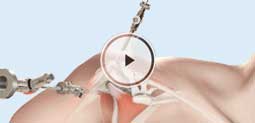Fracture & Trauma
The hand is one of the most flexible and useful parts of our body. In the wrist, many small bones are connected to each other and help you perform various activities. Because of overuse of the hand in various activities, hands are more prone to injuries and you may suffer from sprains and strains; fractures when lifting and carrying heavy objects, hand injury while operating machinery, bracing against a fall, or sports-related injuries. Any injury to the hand bones or attached ligaments may cause pain and strain, thereby limiting the activities of the hand and wrist. A broken wrist is among the most common fracture injuries. A fracture is a break in the bone and a sprain is a tear of the ligament, the connective tissue. Fractures or sprains limit the activities of the hand and need to be treated.
Fractures: A fracture is a break in the bone which occurs when more force than the bearable limit is applied against a bone. Serious injuries to the hand or wrist occur due to a high degree of force or pressure and may result in fractures. A fracture may cause severe pain, swelling, bruising or bleeding, discoloration of the skin and limit the mobility of the limb. Fractures can only be treated by using a cast or splint while the bone heals. Sometimes, surgery may be needed where plates, pins or screws may be placed to keep the bone stable.
Diagnosis
The diagnosis of a fracture is based on history, physical examination and X-ray imaging to determine the type and severity of the fracture. X-rays are the most widely used diagnostic tools for the evaluation of fractures.
The objective of early fracture management is to control bleeding, prevent ischemic injury (bone death) and to remove sources of infection such as foreign bodies and dead tissue.
The next step in fracture management is the reduction of the fracture and its maintenance. It is important to ensure that the involved part of the body returns to its prior function after the fracture heals. To achieve this, maintenance of fracture reduction with immobilization technique, is done by either non-operative or surgical method.
Medical Therapy
Non-operative (closed) therapy comprises of casting and traction (skin and skeletal traction).
- Casting: Closed reduction is done for any fracture that is displaced, shortened or angulated. Splints and casts made of fiberglass or plaster of paris material are used to immobilize the limb.
- Traction: Traction method is used for the management of fractures and dislocations that cannot be treated by casting.
Surgical Therapy
- Open Reduction and Internal Fixation (ORIF): This is a surgical procedure in which the fracture site is adequately exposed and reduction of the fracture is done. Internal fixation is done with devices such as Kirschner’s wires, plates and screws, and intramedullary nails.
- External fixation: External fixation is a procedure in which the fracture stabilization is done at a distance from the site of fracture. It helps to maintain bone length and alignment without casting.
Rehabilitation
Fractures may take several weeks to months to heal completely. You should limit your activities even after the removal of the cast or brace so that the bone becomes solid enough to bear stress. Rehabilitation programs involve exercises and gradual increase in activity levels until the process of healing is complete.











